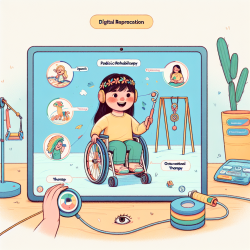Recent research has underscored the potential of telehealth to bridge gaps in pediatric rehabilitation services, particularly for Indigenous children who face unique barriers to accessing healthcare. The scoping review, "Use of telehealth for paediatric rehabilitation needs of Indigenous children – a scoping review," provides critical insights into the effectiveness, feasibility, and cultural considerations necessary for successful telehealth interventions.
Key Findings from the Scoping Review
The review highlights several key outcomes and best practices for implementing telehealth in pediatric rehabilitation for Indigenous children:
- Technology Use: Videoconferencing is the most commonly used technology, enabling real-time interaction between therapists and patients. Hybrid models that combine in-person visits with virtual sessions are also effective.
- Cultural Responsiveness: Successful interventions are those that are community-led and culturally responsive. This includes involving Indigenous communities in the planning, implementation, and evaluation stages.
- Local Support: The presence of local facilitators or Indigenous liaison officers can significantly enhance the effectiveness of telehealth services by providing cultural guidance and logistical support.
- Family-Centered Care: Engaging families in the therapeutic process is crucial. Family-centered care models empower caregivers and improve outcomes for children.
Challenges and Barriers
Despite the promising potential of telehealth, several challenges need to be addressed:
- Technological Barriers: Poor internet connectivity and limited access to necessary devices can hinder the delivery of seamless telehealth services.
- Cultural and Language Barriers: Differences in worldviews and language can impede effective communication and service delivery. Culturally responsive training for healthcare providers is essential.
- Trust and Relationship Building: Building trust with Indigenous families often requires in-person interactions, which can be challenging to achieve through telehealth alone.
Recommendations for Practitioners
To improve the delivery of telehealth services to Indigenous children, practitioners should consider the following recommendations:
- Engage with Communities: Collaborate with Indigenous communities to co-develop telehealth programs that meet their specific needs and preferences.
- Provide Cultural Training: Ensure that all healthcare providers receive training in culturally responsive care, including understanding Indigenous histories and intergenerational trauma.
- Utilize Hybrid Models: Combine in-person visits with virtual sessions to build trust and provide comprehensive care.
- Involve Local Facilitators: Employ local facilitators or Indigenous liaison officers to support families and enhance the cultural relevance of the services.
By implementing these best practices, practitioners can significantly improve the accessibility and effectiveness of pediatric rehabilitation services for Indigenous children, ensuring that they receive the care they need to thrive.
To read the original research paper, please follow this link: Use of telehealth for paediatric rehabilitation needs of Indigenous children – a scoping review.










